- Home
- Rick Riordan
Demigods and Monsters Page 4
Demigods and Monsters Read online
Page 4
Seeing Clearly
The Lightning Thief is also about “seeing clearly”: the schools Percy has attended (six so far) and the various teachers he’s had, as well as his smelly unpleasant stepfather, have marked him down as a troublemaker and a no-hoper. When something goes wrong, it must be Percy’s fault.
And that’s because they don’t see the real Percy.
Nor, for that matter, does he see them very clearly: He’s unaware that his teacher Mr. Brunner is actually a centaur, that Mrs. Dodds is a razor-taloned Fury out for his blood, that his best friend Grover is a cloven-footed satyr, and that the three old ladies on the roadside are the Fates.
Later, he fails to see through the disguises the various gods or monsters adopt—sometimes until it’s almost too late, as when the Mother of Monsters, Echidna, along with her doggie-who-ain’t-a-doggie, tries to turn him into a smokin’ shish kebab.
Percy’s failure to “see clearly” extends to his “normal” life as well: His dyslexia, considered a handicap in our world, causes visual distortions. “Words had started swimming off the page, circling my head, the letters doing one-eighties as if they were riding skateboards,” he describes it in The Lightning Thief. In reality, the dyslexia is the result of Percy’s brain being hard-wired for Ancient Greek and is part of his uniqueness.
But most of all, Percy doesn’t see himself clearly.
Like the schools and society that have labeled him as some kind of maverick and failure, he sees himself in terms of those same labels.
In the Rags to Riches story, the true focus is not so much on growing up, as it is one of its chief requirements: becoming aware.
It is learning to be conscious, learning to see clearly and wholly, that distinguishes these types of stories. Even Peter Rabbit manages to escape the dangerous farmer and the garden in which he eats and plays to his heart’s content (like any egocentric infant) only when he climbs up high to get a better view of things.
Attaining consciousness—awareness—is the true mark of the rebel, and the greatest danger for those in power, whether they be gods or parents. It is no coincidence that authoritarian regimes, like Saddam Hussein’s pre-invasion Iraq, seek always to control the media and to dictate what people can and can’t know.
Rags to Riches
In his astonishing book The Seven Basic Plots, Christopher Booker outlines and explores the fundamental stories that have entranced, and continue to entrance, the human race. One of these is the Rags to Riches plotline. While many stories combine more than one of these plots (Star Wars is both a Rags to Riches story and an “Overcoming the Monster” story, as is The Lightning Thief), I want to concentrate on the Rags to Riches plotline, in which, as Booker puts it, “a young central figure emerges step by step from an initial state of dependent, unformed childhood to a final state of complete self-realization and wholeness”—in other words, the hero gains maturity throughout the journey, or rite of passage, that he experiences.
Why is this story, above all others, told so often?
The quick answer is that it is the only one of the seven basic plots that charts the life of a human being from the limited awareness of childhood to the discerning perception of adulthood.
The Rags to Riches story is also designed to show us the importance of learning through experience. It shows us the early days of life when no one in the story sees clearly; how this permits us to be easily ruled by others; how cruelty and abuse rule through ignorance; how trying to see clearly becomes a threat to this domination and in what way, by passing through various grueling tests in which a near death occurs. Throughout all this, new powers of maturity are gained, self-mastery acquired, and a “happy ending” is defined as one in which everyone has begun to see more clearly than ever before. And as Booker points out, when people can see properly, they can move ahead and gain confidence and prosperity.
By contrast, this plot also shows how the great and fatal flaw of the dark figures in the story is always a kind of persistent or peculiar blindness, a distortion of vision, brought on by self-centeredness—that very trait that defines infancy and early childhood. The title itself tells us that the preoccupation in The Lightning Thief is with vision: Someone has stolen light—the very thing needed to see clearly! And the culprit? A god, of course. A god of war. A god of domination and darkness.
In this sense, we understand that the dark figures of the story are those who never grow up, who never see clearly and wholly, who remain blind and self-centered.
The Five Stages of Growth
The Rags to Riches plot generally progresses through five stages intended not only to chart the human journey but also the journey of that most rebellious of human traits: consciousness.
Stage 1: Initial wretchedness at home and the “Call”
Here we meet the young neglected hero and see the world he inhabits, a world of scorn and abuse (think of the Dursleys in Harry Potter). The importance of this stage is not just to show how things began but to draw attention to the difference between the hero/heroine and the darker figures around him or her—in Percy’s case his stepfather, his math teacher Mrs. Dodds, the nastiest girl in school who torments him and Grover, and the school system itself. Note that in mythological terms, the lowly hero/heroine is also the “diamond in the rough,” that which is overlooked and treated with contempt for appearing to be plain and inferior.
Yet what is significant here is that while the dark figures in the story rarely change at all, the hero also does not change as much as characters in other story types . . . and that’s because the Rags to Riches hero already possesses the traits that will one day make him or her exceptional. These traits are simply buried inside him, more or less invisible to the people around the hero, and to the hero as well.
The other crucial aspect of this stage is that we see the downside of not seeing clearly, of being in a state of limited awareness: Percy buys into society’s labels (believing himself to be a loser and trouble-maker); he is exploited by his scumbag stepfather (he feels he has no power); he thinks there is something wrong with him, that he’s bad
(everything keeps going wrong); and he doesn’t know what is going on or who people really are (he does not have the special knowledge or maturity he needs to “see” the bigger picture).
Stage 2: Out into the world, initial success
This is a kind of “dream stage” when almost everything goes right at last, in contrast to the next stage, though it also gives the hero time to start developing some of the skills he’ll need later on. In Star Wars, Luke learns how to use the Force from Obi-Wan Kenobi. In The Lightning Thief, Percy Jackson arrives at Camp Half-Blood and begins his training. Like all “orphans” in Rags to Riches stories, he is also trying to find out who he is and where he came from. This search for personal identity is a powerful force and usually focuses on the hero’s parentage. Here, Percy discovers he is the son of Poseidon, the lord of the ocean (interestingly, the ocean is usually a symbol of the unconscious and of the feminine).
During this stage the hero tries to grow up too quickly: becomes cocky, arrogant, or overly prideful, and thinks he is mature before he really is; he usually makes important decisions based on this false assumption. What success he finds at this point is based on some false power or outside agency (Aladdin had his genies).
Very soon he will have to go it alone, but right now he is still not seeing clearly and wholly. His relationships with others suffer. He makes enemies easily. And he does not complete crucial lessons, trying to leapfrog ahead in an impatience to prove himself—a trait that reveals to the discerning reader how unready he still is, despite the fact that he can now talk the talk and walk the walk.
Stage 3: The central crisis
Suddenly, everything goes south. The hero is plunged into despair and hopelessness, made worse by his former bravado and high hopes; he experiences a brush with death, symbolic or otherwise (E.T. “dies”; Frodo lapses into a deathlike stupor; Cedric Diggory is murdered in front o
f Harry while he is symbolically crucified). This stage represents the danger of discovering (or starting to discover) one’s true identity: As I said earlier, becoming oneself is always seen as a crime against the masses, an act of rebellion against the establishment.
And “punishment” quickly follows.
Percy is plunged into the middle of a war between petulant gods, and must set out on an almost suicidal quest for which he is far from ready. He encounters several symbolic deaths and has close shaves with real ones, as in the deadly confrontation with the Mother of Monsters, Echidna.
Here, Riordan carefully crafts the psychological development of his young protagonist: The only way to survive is for Percy to have faith in himself, or rather in the “new self” or identity that he has so recently discovered. This sudden realization that he really does have some innate power, that he really is a demigod after all, significantly occurs in a very high place, the Gateway Arch—from where he can see in all directions.
Stage 4: Independence and the final ordeal
The hero survives the central crisis, having faced “death” and emerged from it changed. This is the final test through which his transformation into his new self takes place, though this new self will still have to be tested in a climactic confrontation with the darkest figure in the story.
In all the recent stages, Percy has been discovering the importance of seeing clearly. This not only involves gaining a better understanding of what drives his two companions, but also in penetrating the disguises of the monsters. As each new threat unfolds, he sees through the assumed identity of the monster more swiftly than before. He is growing up.
And that, of course, makes him an even bigger threat.
Percy is now very much on his own. Like Aladdin after his princess has been kidnapped, like Harry in the cemetery, Percy must stand on his own two feet and become the master of his own powers. To do this, he must “see” himself clearly, not just others, and know his own strengths and weaknesses.
Stage 5: Final union, completion, and fulfillment
In a series, you don’t get to this final stage till the last book (unless the “completion” is to be dramatically overturned at the start of the next one). Not only can each book in a series follow the Rags to Riches plotline, but so can the series as a whole. In this sense, Harry Potter and the Goblet of Fire represents the central crisis of the series, which is why Harry is separated from everyone else in the maze and has a very real brush with death: his own, and Cedric’s (not to mention the “ghosts” of his parents, and the location in a graveyard).
At this stage in The Lightning Thief, Percy has become more fully himself and is now seeing even more clearly. He has rebelled against the restrictions and the limiting labels that have been placed upon him, and he is ready to assume more responsibility for his own actions in the world.
But that doesn’t mean everyone is happy with him.
After all, he’s done what the gods could not: resolved a dangerous conflict by seeing through trickery, deceit, and false disguises. He has, in other words, rocked the boat.
Rite of Passage
So what we have here, in Riordan’s The Lightning Thief, is the journey of a rebel, a journey toward consciousness and awareness, a journey of someone who dares to become himself and fulfill his destiny.
But, as we saw earlier, this process of acquiring consciousness, of seeing clearly, is dangerous, since it is a challenge to the established order and the powers that be. Yet everyone goes through it. And in doing so, they commit the oldest “crime” there is: trying to be an individual.
Perhaps this is the oldest of battles: the battle between the generations, reflected in the first Greek myths that tell how the Olympians threw down the older gods, the Titans, then warred with humanity, their “children,” trying to keep them in darkness—a darkness that the greatest rebel of them all, Prometheus, liberated them from by stealing fire from Mount Olympus and giving it to humankind (for which he was barbarically punished by Zeus).
Just like the gods, parents—often with the best intentions—instinctively try to keep their children from growing up, because increasing awareness is always a challenge to them; a slap in the face, a rejection.
But all children grow up. Because all children are rebels, like Percy Jackson.
They are born with the seed of rebellion in them, as Booker makes clear when he notes that the young heroes and heroines of the Rags to Riches plotline are very different at the end of the story from how they began: What has happened to them is that they have at last revealed or developed what was potentially in them all the time. They have matured. They have grown up. They have fully realised everything that was in them to become. In the best and highest sense, they have become themselves.
Australian author Paul Collins is best known for his fantasy and science fiction series: the Jelindel Chronicles, the Quentaris Chronicles (which he co-edits with Michael Pryor), and the Earthborn Wars, and the World of Grrym trilogy (with Danny Willis). He is Publishing Director of Ford Street Publishing. He can be found on the Web at www.paulcollins.com.au, www.quentaris.com, and www.fordstreetpublishing.com.
Would You Want to Be One of Artemis’s Hunters?
Carolyn MacCullough
If given the option of eternal youth, my guess is that nine out of ten women would take it. After all, Oil of Olay, Revlon, and Lancôme, among others, have spent millions of dollars in ad campaigns trying to convince us that we can purchase it in just one small bottle. As a society, we practically fetishize youth, craving that unlined skin and endless exuberance and effervescent energy that just seems to ooze from the pores of the very young. Most women strive to preserve youth in even the smallest of ways, no matter how many times we steel ourselves to the idea of aging gracefully.
So what if someone made you an offer you thought you couldn’t refuse? An offer that seemed too good to be true (as most offers like this are)? What if Artemis herself, Greek goddess extraordinaire (also known as Diana if you happen to be Roman), mistress of the hunt, goddess of the moon, defender of all things wild and free, came down from the pearly heights of Mount Olympus and made you a proposition?
First of all, only females may apply (sorry, guys!). So ladies, the offer on the table is that Artemis will grant you eternal youth. Yes, eternal youth; something that people have quested for across the centuries. No need to fear the onslaught of wrinkles or the first strands of gray hair or a general diminishment of vigor and vim (two things that seem truly essential for a productive life even if most of us can’t exactly define “vim” on the spot). You’ll never fall victim to arthritis or memory loss or any of those other aspects of growing old that range from the merely annoying to the downright debilitating.
Okay, maybe it’s a little too early for you to be worrying about all of that anyway. Your skin is unlined, and as for gray hair, that’s something your mom is always moaning over, not you. But forever-firm skin and shining hair are not the only benefits of this offer. Consider that you’ll also gain freedom from all the responsibilities of daily life. You’ll acquire the ability to run tirelessly and the opportunity to romp with a goddess and your fellow huntresses all over the wild reaches of this world. You’ll become part of a steadfast sisterhood, the ultimate zenith of girl power. You’ll never have worry about your best friend moving away and having no one to sit with at the lunch table in school, or wonder if your friends are true friends. And you’ll never have to go through that “crisis of self-confidence” that everyone is always warning teenage girls about. Plus, no man will ever, ever tell you what to do or say or think, or more precisely what you can’t do or say or think.
All you have to do is utter the words, “I pledge myself to the goddess Artemis. I turn my back on the company of men, accept eternal maidenhood, and join the Hunt.”
Yes, you heard that right. Eternal maidenhood and no men. No men at all.
So therein lies the catch (I did promise one of those). In exchange for always living in the
endless summer of your life, with complete freedom from everything, you must foreswear all contact with men. And I really do mean all contact, not just contact of the romantic persuasion. But let’s talk about the romantic-persuasion kind first.
Forget about first dates. No more should I put my hair up or down, what shoes do I wear, is this outfit okay? No more tiny perfect butterflies in your stomach, and no more agonizing over will he kiss me now, should I kiss him first, oh I really hope he kisses me at all! No need for those long talks on the phone with your best friend about how he actually looked at you in the cafeteria today or touched your hand maybe by accident, but maybe not, and how you think for three seconds he was smiling in your general direction and you know he was smiling at you because you looked behind your shoulder (in a really subtle way of course) and made sure that there was no one behind you that he could possible be smiling at. No need for any of that because when you’re one of Artemis’s maidens you really are just that: a maiden through and through. Forever. Artemis was the goddess of virginity, and while Athena was also a virgin goddess, she was known more for being the goddess of wisdom. Don’t forget, Athena sprang forth fully grown from her father Zeus’ head and is always depicted as a grave woman, while Artemis is always portrayed as an eternally young and carefree girl. Greek mythology tells us that Artemis made the choice to remain a virgin at a very early age (some versions pinpoint it as early as three years old). Artemis made this request, along with one for a silver bow and silver arrows, of her father Zeus, and it was granted.

 The Blood of Olympus
The Blood of Olympus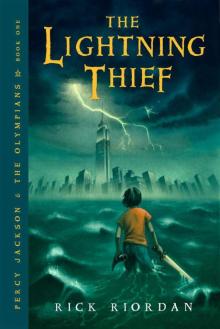 The Lightning Thief
The Lightning Thief The Hidden Oracle
The Hidden Oracle The Dark Prophecy
The Dark Prophecy The Sea of Monsters
The Sea of Monsters The Sword of Summer
The Sword of Summer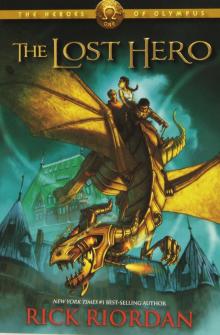 The Lost Hero
The Lost Hero The Ship of the Dead
The Ship of the Dead The Burning Maze
The Burning Maze The Battle of the Labyrinth
The Battle of the Labyrinth The Hammer of Thor
The Hammer of Thor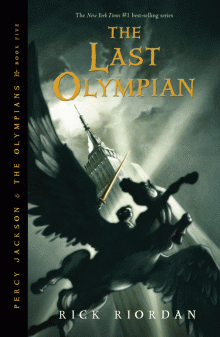 The Last Olympian
The Last Olympian The Red Pyramid
The Red Pyramid The Maze of Bones
The Maze of Bones The Son of Sobek
The Son of Sobek The Titans Curse
The Titans Curse The Staff of Serapis
The Staff of Serapis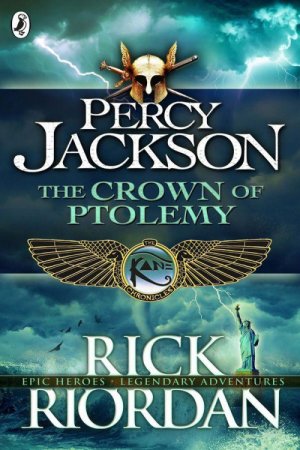 The Crown of Ptolemy
The Crown of Ptolemy Big Red Tequila
Big Red Tequila Percy Jackson: The Complete Series
Percy Jackson: The Complete Series Vespers Rising
Vespers Rising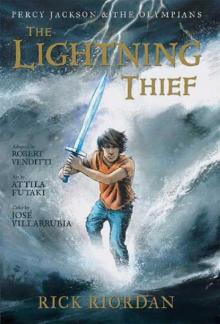 The Lightning Thief: The Graphic Novel
The Lightning Thief: The Graphic Novel The Mark of Athena
The Mark of Athena The House of Hades
The House of Hades The Son of Neptune
The Son of Neptune The Demigod Diaries
The Demigod Diaries The Serpents Shadow
The Serpents Shadow The Titan's Curse pjato-3
The Titan's Curse pjato-3 The Demigods of Olympus: An Interactive Adventure
The Demigods of Olympus: An Interactive Adventure The Tyrant's Tomb
The Tyrant's Tomb The Demigod Files
The Demigod Files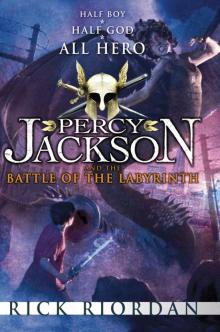 Percy Jackson and the Battle of the Labyrinth
Percy Jackson and the Battle of the Labyrinth The Throne of Fire
The Throne of Fire The Serpent's Shadow (The Kane Chronicles, Book Three)
The Serpent's Shadow (The Kane Chronicles, Book Three) Mission Road
Mission Road The Devil Went Down to Austin
The Devil Went Down to Austin The Tower of Nero
The Tower of Nero The Heroes of Olympus: The Complete Series
The Heroes of Olympus: The Complete Series Rebel Island
Rebel Island The Trials of Apollo Camp Jupiter Classified: A Probatio's Journal
The Trials of Apollo Camp Jupiter Classified: A Probatio's Journal Percy Jackson's Greek Gods
Percy Jackson's Greek Gods The Last King of Texas
The Last King of Texas The Throne of Fire kc-2
The Throne of Fire kc-2 Magnus Chase and the Sword of Summer
Magnus Chase and the Sword of Summer Maze of Bones - 39 Clues 01
Maze of Bones - 39 Clues 01 Magnus Chase and the Gods of Asgard, Book 2: The Hammer of Thor
Magnus Chase and the Gods of Asgard, Book 2: The Hammer of Thor Kane 2 - The Throne of Fire
Kane 2 - The Throne of Fire The Last Olympian pjato-5
The Last Olympian pjato-5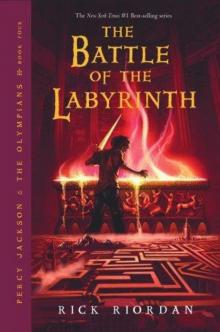 The Battle of the Labyrinth pjato-4
The Battle of the Labyrinth pjato-4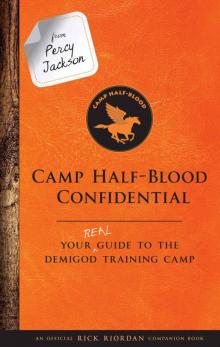 From Percy Jackson: Camp Half-Blood Confidential: Your Real Guide to the Demigod Training Camp (Trials of Apollo)
From Percy Jackson: Camp Half-Blood Confidential: Your Real Guide to the Demigod Training Camp (Trials of Apollo) For Magnus Chase: Hotel Valhalla Guide to the Norse Worlds: Your Introduction to Deities, Mythical Beings, & Fantastic Creatures
For Magnus Chase: Hotel Valhalla Guide to the Norse Worlds: Your Introduction to Deities, Mythical Beings, & Fantastic Creatures Southtown tn-5
Southtown tn-5 From Percy Jackson_Camp Half-Blood Confidential
From Percy Jackson_Camp Half-Blood Confidential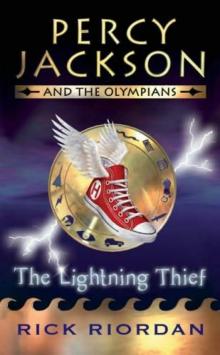 The Lightning Thief pjatob-1
The Lightning Thief pjatob-1 The Sea of Monsters pjatob-2
The Sea of Monsters pjatob-2 For Magnus Chase_Hotel Valhalla Guide to the Norse Worlds
For Magnus Chase_Hotel Valhalla Guide to the Norse Worlds Percy Jackson and the Bronze Dragon
Percy Jackson and the Bronze Dragon Percy Jackson: The Complete Series (Books 1, 2, 3, 4, 5)
Percy Jackson: The Complete Series (Books 1, 2, 3, 4, 5) The Mark of Athena (The Heroes of Olympus, Book Three)
The Mark of Athena (The Heroes of Olympus, Book Three) The Heroes of Olympus: The Demigod Diaries
The Heroes of Olympus: The Demigod Diaries The Last King of Texas - Rick Riordan
The Last King of Texas - Rick Riordan Percy Jackson and the Sword of Hades
Percy Jackson and the Sword of Hades Brooklyn House Magician's Manual
Brooklyn House Magician's Manual The Kane Chronicles, Book One: The Red Pyramid
The Kane Chronicles, Book One: The Red Pyramid The Trials of Apollo, Book Three: The Burning Maze
The Trials of Apollo, Book Three: The Burning Maze The Demigods of Olympus
The Demigods of Olympus Big Red Tiquila - Rick Riordan
Big Red Tiquila - Rick Riordan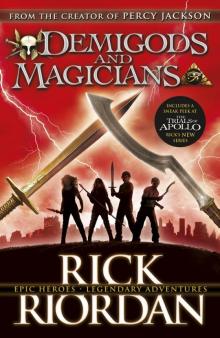 Demigods and Magicians
Demigods and Magicians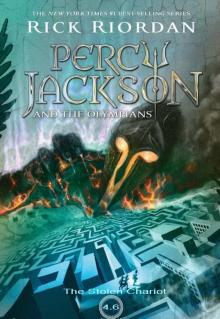 Percy Jackson and The Stolen Chariot
Percy Jackson and The Stolen Chariot The Mark of Athena hoo-3
The Mark of Athena hoo-3 From Percy Jackson: Camp Half-Blood Confidential: Your Real Guide to the Demigod Training Camp
From Percy Jackson: Camp Half-Blood Confidential: Your Real Guide to the Demigod Training Camp The House of Hades hoo-4
The House of Hades hoo-4 The Devil went down to Austin tn-4
The Devil went down to Austin tn-4 9 from the Nine Worlds (Magnus Chase and the Gods of Asgard)
9 from the Nine Worlds (Magnus Chase and the Gods of Asgard) The Trials of Apollo, Book One: The Hidden Oracle
The Trials of Apollo, Book One: The Hidden Oracle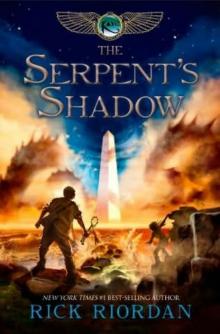 The Serpent's Shadow kc-3
The Serpent's Shadow kc-3 The Son of Neptune hoo-2
The Son of Neptune hoo-2 The widower’s two step tn-2
The widower’s two step tn-2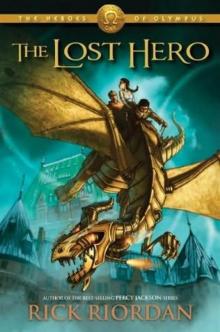 The Lost Hero hoo-1
The Lost Hero hoo-1